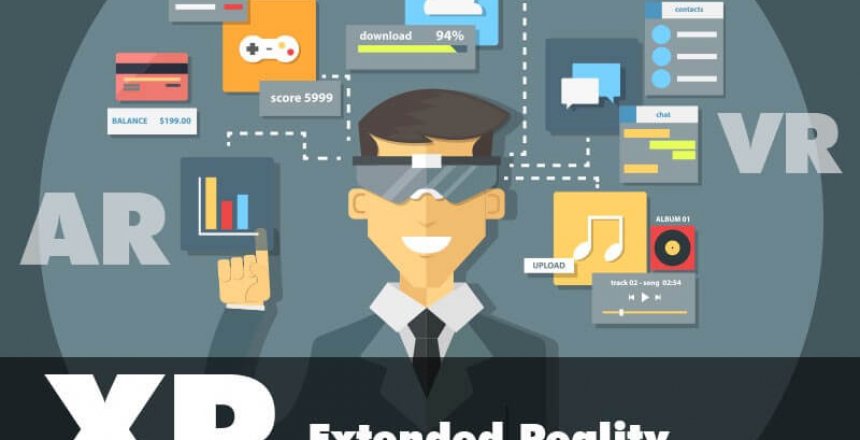What are these and why do I need to know? Well the big seller of this technology is the huge return on investment or ROI that they can give you and your business. Huge increases in retention of information and people want to stay the course over traditional learning.
VR - Virtual Reality
Virtual Reality is an immersive environment, you put a headset over your head, put the headphones over your ears, a handset or two and you are there in that virtual world.
One such simulation is a pop concert, you put the helmet on and you are there, standing in the crowd of fans and you can see the band on stage, you can turn your head and see more of the stage and audience, you can look up and down and you can even turn around and take in every detail as if you were there.
The technology that makes this happen consists of a screen in the helmet and headphones, and a set of 3 axis accelerometers that measure your head movement. You may also be holding a handset with accelerometers to measure how you move your hands and buttons to measure tactile input. The computer then calculates what you need to see based on those co-ordinates.
You can watch VR videos without a VR headset, it is not as immersive as your surroundings interfere.
AR - Augmented Reality
Augmented Reality is about taking your existing reality and adding a digital overlay over the top. A popular game was Pokemon Go, which would superimpose a Pokemon character in front of the player as if it existed in real life. You look at the world and it’s not there, but on the screen is Pikachu.
There are AR apps you can use on your phone to find out where the nearest restaurant is or what houses are for sale in your area.
With Google Glass, the glasses projected information onto the glasses so the user could see them in real time. So driving directions could clearly be seen for the user.
There are also AR headsets that are similar to the VR headsets but use a real time camera to show the real world.
MR - Mixed Reality
Mixed Reality combines both AR and VR, which enables the user to switch between both worlds.
You are baking a cake, and the AR headset shows you the ingredients, but you go to the cupboard and realise you don’t have an ingredient, so rather than spoiling the cake, you switch to VR mode and bake the cake in the virtual world by swapping the missing ingredient with another you do have, and seeing the result in front of you. If the cake looks okay, you can go back to the AR mode and substitute, or go into VR mode to see if your local store has that ingredient, add it to your basket and then collect and pay when you get there.
XR - Extended Reality
Extended Reality is the umbrella term for all three realities. It is also what defines how one helmet interacts with other manufacturer’s equipment and world.
OpenXR provides a unified layer for apps and equipment to work together so that the end user doesn’t end up with a product that is like having a Laser disc when everyone else has a DVD.
Uses of XR
One of the most surprising things about XR technology is how it influences the world.
Traditional learning might have meant you saw an elephant in a book, or heard it’s call or watched a video. In XR, you can experience the elephant as if it were in the room with you, every detail of it’s skin and hair up close, hear it breathe, eat and drink and you can almost smell it.
Take that to anything you learn and you remember it in greater detail.
When Shelley Peterson at Lockheed Martin noticed a 99% improvement in the first trial, and each trial scored an above 90% improvement. Decreasing training times and increasing retention rates. A training on torquing up bolts traditionally takes 3 hours can be done in 45 minutes with XR.
Learning more
ARInsider has a podcast on how XR’s killer App is it’s ROI
OpenXR is making a unified environment for both software and hardware.

